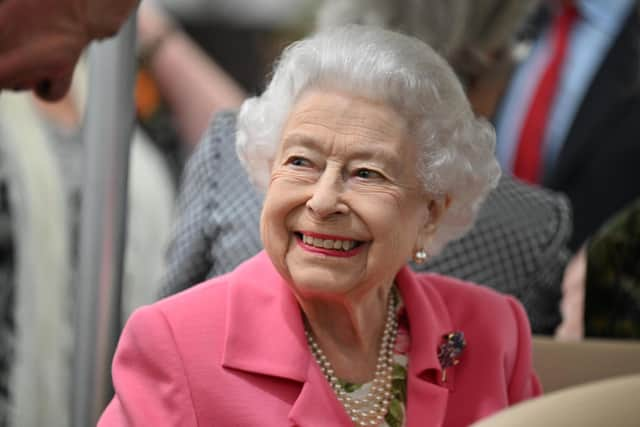The Queen's long reign has been one of transformation - Dean of Wakefield
I pass her every morning on my walk into the cathedral, aware of her watchful gaze over the northern boundary of the city’s fine civic quarter.
So permanent does the statue of Queen Victoria seem that I was surprised to find out recently that this is the third location in which she has found herself; indeed, she has only been in her present position since 2009.
Advertisement
Hide AdAdvertisement
Hide AdIn 2015 Her Majesty Queen Elizabeth II surpassed Victoria’s record as our longest reigning monarch. This year we celebrate her Platinum Jubilee. It’s one thing for the statue of a long-departed monarch to accommodate itself to change – after all it has no choice about being moved around.


It’s quite another for a monarch who is thankfully still very much alive to do so. Her Majesty’s seven decades on the throne have been years of relentless transformation and development across all the nations that make up the United Kingdom. Yet throughout her reign the Queen has proved adept at presiding over a subtle blend of continuity and change within the institution of our monarchy.
Like all clergy in the Church of England, I am required to take an oath of allegiance to the monarch every time I begin a new role. This is a reminder that, in addition to being our Head of State, the Queen is the Supreme Governor of the Church of England – a title that goes back to Tudor times.
As well as inviting politicians to form governments, the monarch also appoints archbishops and bishops. During the Queen’s reign there have been seven Archbishops of Canterbury. The first of these, Geoffrey Fisher, officiated at her coronation. Fisher was born in 1887, and so provided a remarkable link with the reign of Queen Victoria, Her Majesty’s great great grandmother.
Advertisement
Hide AdAdvertisement
Hide AdThere is much that Fisher would recognise in the life of the Church of England today, but much that he could not have foreseen: during the 70 years of Queen Elizabeth’s reign, continuity and change have also been evident in the life of the church.
At the other end of the civic quarter from Queen Victoria, Wakefield Cathedral watches protectively over the district as it has done for hundreds of years. The Queen memorably visited the cathedral in 2005 for the distribution of the Royal Maundy, and on Saturday at noon we shall be marking and celebrating her seven decades of faithful and dedicated service to the nation in a special Service of Thanksgiving.
The Queen’s representative, the Lord-Lieutenant of West Yorkshire, and the Bishop of Leeds will both be present at this service. They will be a reminder of the continuity of the link between the monarch and the Church of England. In contrast the interior of the cathedral, which has been completely refurbished and reimagined in the years since Her Majesty’s visit 17 years ago, will be a reminder of the change in the Church’s understanding of the way in which our buildings can be used: not only as places of worship, but also as community assets, as places of welcome and hospitality for people of all faiths and no faith.
I have the privilege of being responsible for a building that has been transformed. As a member of Wakefield’s High Street Taskforce, I also have the privilege of working beyond the walls of the cathedral with colleagues across various sectors. Together, we are seeking to transform our city through a Masterplan that offers a bold vision.
Advertisement
Hide AdAdvertisement
Hide AdWe want Wakefield to be a place of which its citizens can be proud; a place of secure employment, good housing and a wide range of cultural and creative opportunities; a place which people will want to visit; a place that is distinctive within our city region.
What excites me most about Wakefield’s Masterplan is the way in which it recognises the significance of the buildings and the public spaces we already have, but seeks to integrate this historically important civic inheritance into a new cityscape that will embody and enable all that we aspire to achieve, working with all the people of this great city – the oldest in West Yorkshire.
We look forward to a great celebration. It will be an opportunity to look back on Queen Elizabeth’s remarkable reign, to celebrate the bonds of affection between communities that she has always herself affirmed in her public role, and to look forward with confidence to all that the future holds. Continuity and change.
- The Very Rev Simon Cowling is Dean of Wakefield.